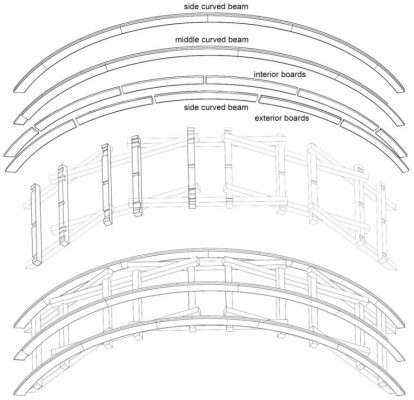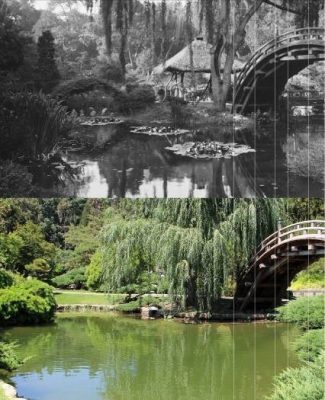In 1913, a so-called Moon Bridge was built in the Japanese garden of the Huntington Library in San Marino, California. The bridge is made of wood and shaped in an exaggerated arch form, which classifies the bridge as a “drum bridge” (Taiko-bashi) in Japanese culture. However, the unique structural form of this bridge, the “woven arch,” is rare in building history.
There is a vital question about how a Japanese-style bridge came to find its home on the west coast of the United States. On March 19, “A full moon in another land: The Moon Bridge in the Japanese garden of the Huntington Library” by Dr. Liu Yan from the Society of Fellows in the Liberal Arts at Southern University of Science and Technology (SUSTech) was published in the high-impact academic journal Frontiers of Architectural Research.
The bridge, built under the requirement of the former railroad magnate Henry Edward Huntington, is located in his estate, which is today known as “Huntington Library, Art Collections, and Botanical Gardens.” Its builder was Toichiro Kawai, a Japanese immigrant from Yokohama, Japan, who was formerly a ship carpenter.
The Moon Bridge was connected to the trend of Japonism (the study of Japanese art) in the West. It was particularly strong in the United States and ran from the latter part of the 19th century to the early stages of the 20th century. Japonism was primarily accompanied by the surge of world expositions that swept the world in the same period.

Bearing the name “full moon,” which stands for “perfection” in East Asian culture, the bridge utilized multiple means to fulfill this metaphor, including incorporating the number 10 in its design, and a 120-degree radius angle in the arc line.
The Huntington Moon Bridge was constructed partly following the Japanese drum bridge tradition and partly introducing the innovative adaptation of a woven arch system. It is (and was) not common in either Japan or America, but relate to a construction tradition rooting in China and witnessed in Europe. The woven arch is Dr. Liu Yan’s specific researching area in the past decade.

In this paper, Liu Yan examined a wide array of archival documents and oral reports to develop a full history on the bridge. He dug out the historical connection between three vital figures relating to the history of the Moon Bridge. After a careful on-site investigation, he revealed the design method, the construction features, and even an undocumented rebuilding history of the bridge. Using building archaeology methodologies, the paper not only gives a complete biography of the bridge architecture but also reconstructed the historical background of the cultural exchange between East Asia and the US.
Paper link: https://www.sciencedirect.com/science/article/pii/S2095263520300182
Proofread ByYingying XIA
Photo ByCenter for Social Sciences